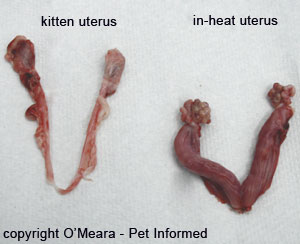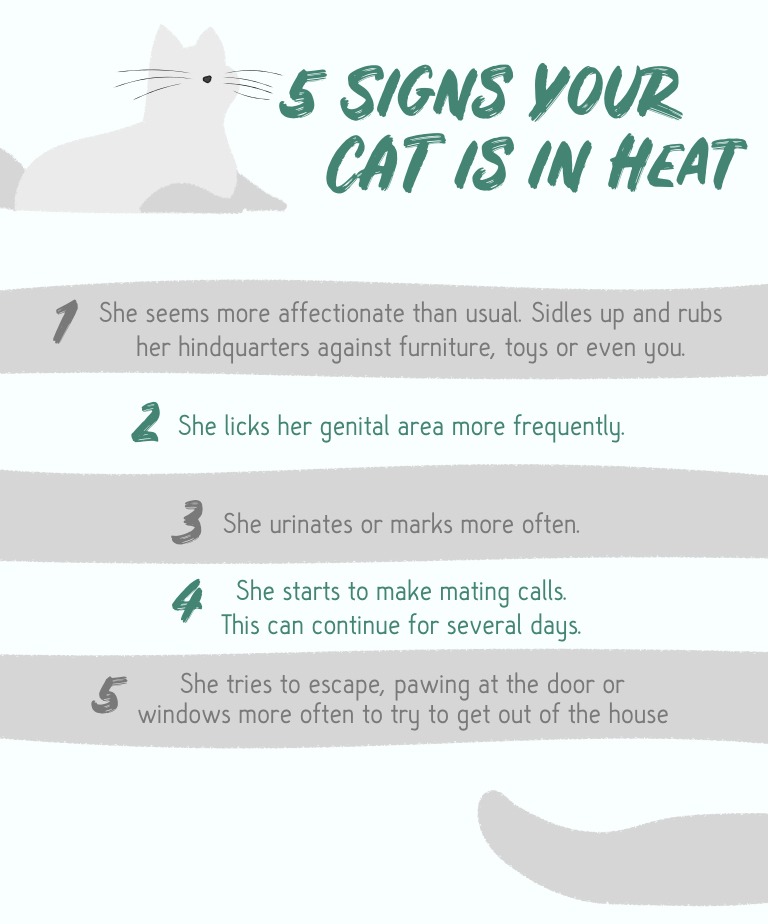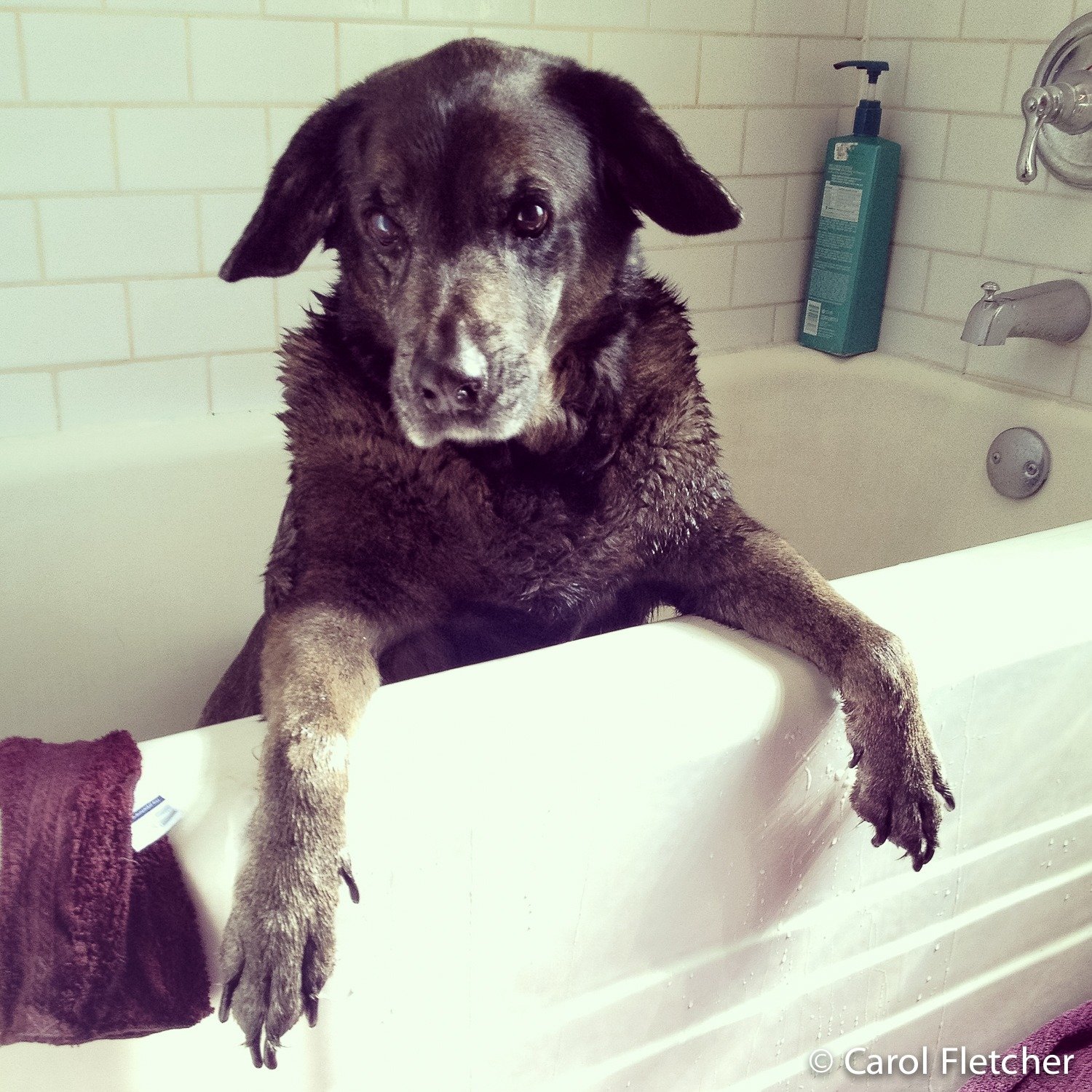Spaying a cat in heat is generally not recommended due to increased risk and complications. However, there are circumstances where it may be necessary.
We will discuss the factors to consider when deciding whether or not to spay a cat in heat, including the potential risks and benefits. We will also explore alternative options and guide you in managing a cat in heat effectively.
By understanding the implications and options, cat owners can make an informed decision and ensure the health and well-being of their furry companions.
Understanding A Cat In Heat
Deciding whether to spay a cat in heat is essential for cat owners. Understanding what a cat in heat is and recognizing the signs can help you decide how to proceed. This article will guide you through the process, providing essential information on caring for your feline friend.
What Is a Cat in Heat?
A cat in heat, also known as estrus, refers to the period in a female cat’s reproductive cycle when she is ready to mate. This natural biological process occurs in unspayed cats, typically starting around six months of age. When a cat is in heat, her body releases hormones that prepare her to reproduce.
Signs Of A Cat In Heat
Identifying the signs of a cat in heat is crucial, as this knowledge can help you make the right decisions for your cat’s well-being.
The following are common signs of a cat in heat:
- Vocalization: A female cat in heat may become exceptionally vocal, seeking attention through yowling and calling out.
- Increased affection: Your cat may become more affectionate than usual, rubbing against you and objects around the house.
- Rolling and arching: You may notice your cat rolling on the floor and arching her back, showcasing her readiness to mate.
- Restlessness: A cat in heat may seem restless and agitated, pacing around and continually engaging in grooming behaviours.
- Excessive licking: Your cat may excessively lick her genitals in an attempt to soothe the hormonal changes happening in her body.
- Increased urination: Urination frequency may be heightened as a cat in heat attempts to attract potential mates through scent marking.
Understanding these signs will help you recognize when your cat is in heat and determine the best course of action for her and your household. Remember, a spayed cat will not experience these symptoms, leading to a calmer and healthier environment for you and your feline companion.

The Pros Of Spaying A Cat In Heat
Spaying a cat in heat has several benefits, including preventing unwanted pregnancies, reducing the risk of certain diseases, and improving the cat’s behaviour and overall health. It is a responsible choice for cat owners to consider.
Preventing Unwanted Pregnancies
A cat in heat can be challenging for both the cat and the owner. One of the significant benefits of spaying a cat in heat is preventing unwanted pregnancies. During heat, female cats are highly fertile and very seeking. This can lead to accidental breeding with undesirable consequences. By spaying your cat, you can avoid the risk of unwanted litter and the challenges of finding homes for the kittens.
Reducing The Risk Of Certain Health Issues
Spaying a cat in heat prevents unwanted pregnancies and offers several health benefits. Female cats in heat are more susceptible to specific health issues, such as uterine infections and mammary tumours. These health problems can be severe and require costly medical treatments. By spaying your cat, you can significantly reduce the risk of these potential health complications, ensuring your beloved feline’s healthier and happier life.
When a female cat is spayed in heat, the surgery eliminates the reproductive organs, reducing the chances of infections in the uterus, which can lead to uterine infections called pyometra. Pyometra can be a life-threatening condition requiring immediate medical attention and, in severe cases, may necessitate an emergency spay. Spaying a cat in heat helps to prevent such dangerous health issues and ensures the well-being of your furry friend.
Additionally, spaying a cat in heat can reduce the chances of mammary tumours. Studies have shown that cats spayed before their first heat have a significantly lower risk of developing mammary tumours later in life. This preventive measure is crucial, as cat mammary tumours are often malignant and can spread to other organs. By spaying your cat in heat, you are taking a proactive step towards minimizing the potential health risks associated with reproductive system diseases.
Conclusion
Spaying a cat in heat offers several advantages, including preventing unwanted pregnancies and reducing the risk of specific health issues. By taking action and considering the well-being of your feline companion, you can ensure a happier and healthier life for your beloved pet.
The Cons Of Spaying A Cat In Heat
Spaying a cat in heat is a common practice to prevent unwanted pregnancies and reduce health risks. However, there are some potential drawbacks to consider. This article will discuss the cons of spaying a cat in heat, including increased surgical risks and potential hormonal imbalances.
Increased Surgical Risks
One of the main concerns when spaying a cat in heat is the increased surgical risks involved. During the heat cycle, the cat’s reproductive organs become engorged with blood, making the surgery more complex. This can lead to bleeding complications and a more extended recovery period for the cat.
Besides, the increased blood flow to the reproductive organs can make it more challenging for the veterinarian to correctly identify and access these organs. This may increase the chances of accidental injury to surrounding tissues during the surgical procedure.
Moreover, a cat in heat may have a more fragile blood vessel network, which can further amplify the surgical risks. The delicate blood vessels can be prone to excessive bleeding during the surgery, requiring extra precautions and careful monitoring by the veterinarian.
Potential Hormonal Imbalances
Another consideration when spaying a cat in heat is the potential for hormonal imbalances. When a cat is spayed in heat, the procedure effectively interrupts the natural hormonal fluctuations during this phase. This can lead to a disruption in the cat’s endocrine system and potentially cause long-term health complications.
The hormones produced during the heat cycle regulate the cat’s reproductive system and influence other bodily functions. These hormones are vital in maintaining the cat’s overall well-being, including their urinary tract health, behaviour, and metabolism.
By spaying a cat while in heat, there is a risk of altering the delicate balance of these hormones. This can increase the likelihood of developing urinary tract issues, unpredictable mood swings, and even potential weight management difficulties for the cat.
| Cons of Spaying a Cat in Heat |
|---|
| Increased Surgical Risks |
| Potential Hormonal Imbalances |
In Conclusion
While spaying a cat in heat can help prevent unwanted pregnancies and reduce certain health risks, it is essential to consider the potential drawbacks. Increased surgical risks and potential hormonal imbalances are significant factors to consider when deciding. Consulting with a veterinarian is crucial to determining the best course of action for your cat’s circumstances.
:strip_icc()/CatAtVet182703507-56a9c2555f9b58b7d0febeb2.jpg)

Frequently Asked Questions For Should You Spay A Cat In Heat?
Q: Can You Spay A Cat While She Is In Heat?
Yes, it is possible to spay a cat while she is in heat, but it is generally recommended to wait until the heat cycle is over. Fixing a cat in heat can be more challenging and may result in increased bleeding during surgery.
It is best to consult a veterinarian to determine the best action.
Q: What Are The Risks Of Spaying A Cat In Heat?
Spaying a cat in heat carries certain risks, such as increased blood flow to the reproductive organs, making the surgery more complicated. There is also a higher risk of excessive bleeding and complications during and after the procedure. Waiting until the cat is out of heat reduces these risks and ensures a smoother surgery.
Q: How Do I Know If My Cat Is In Heat?
Female cats in heat often display signs such as increased vocalization, restlessness, rubbing against objects, and elevating their hindquarters. They may also attract male cats and become more affectionate. It’s important to recognize these signs to make an informed decision about spaying your cat.
Q: When Is The Best Time To Spay A Cat?
The ideal time to spay a cat is before her first heat cycle, usually around six months. This helps prevent unwanted pregnancies and reduces the risk of specific health issues, like mammary cancer. However, cats can be spayed at any age, so it’s never too late to consider the procedure.
Conclusion
Spaying a cat in heat is a decision worth considering for your feline friend’s well-being. Spaying prevents unwanted pregnancies and reduces the risk of specific health issues and can also help improve your cat’s behaviour.
While there are risks associated with spaying during heat, consulting with your veterinarian will ensure you make the best decision for your cat.



